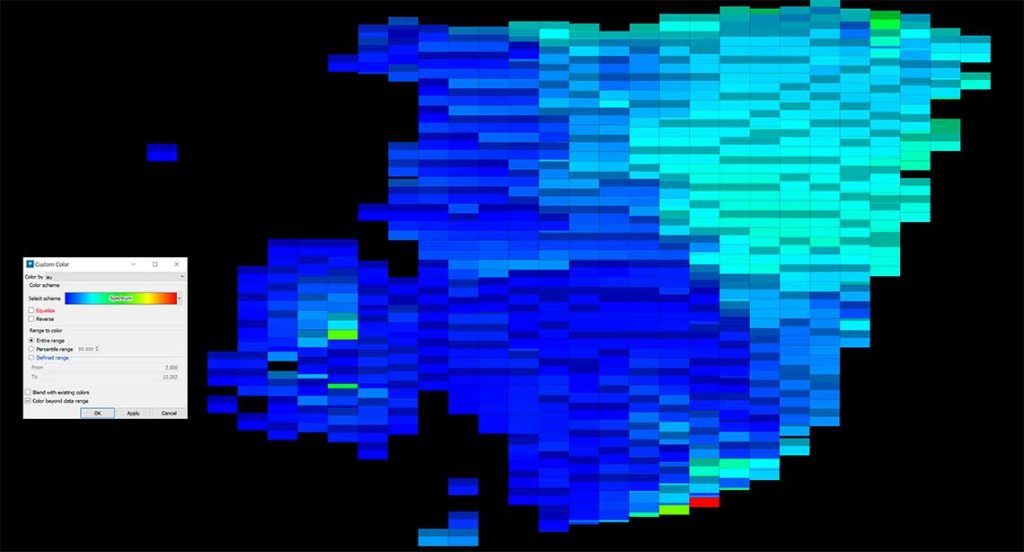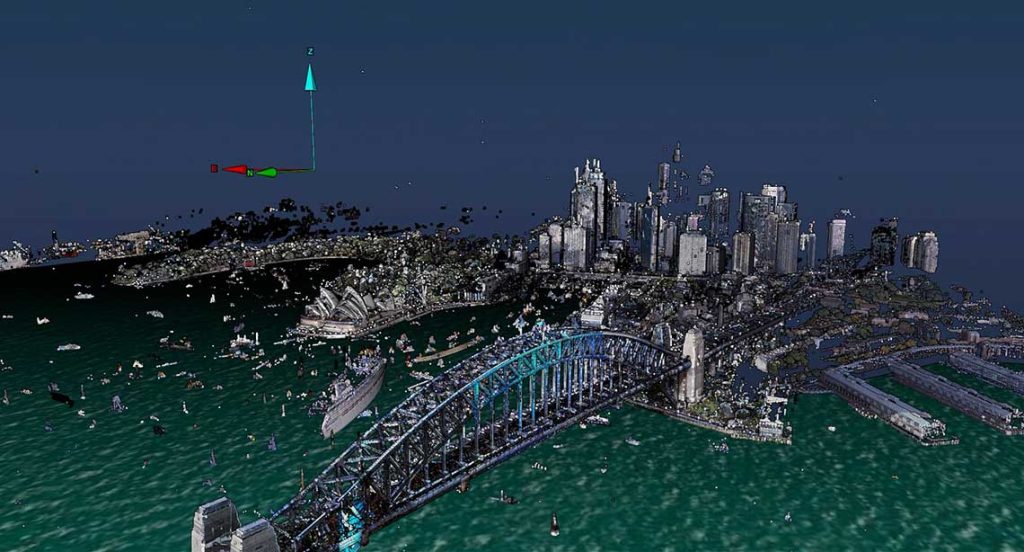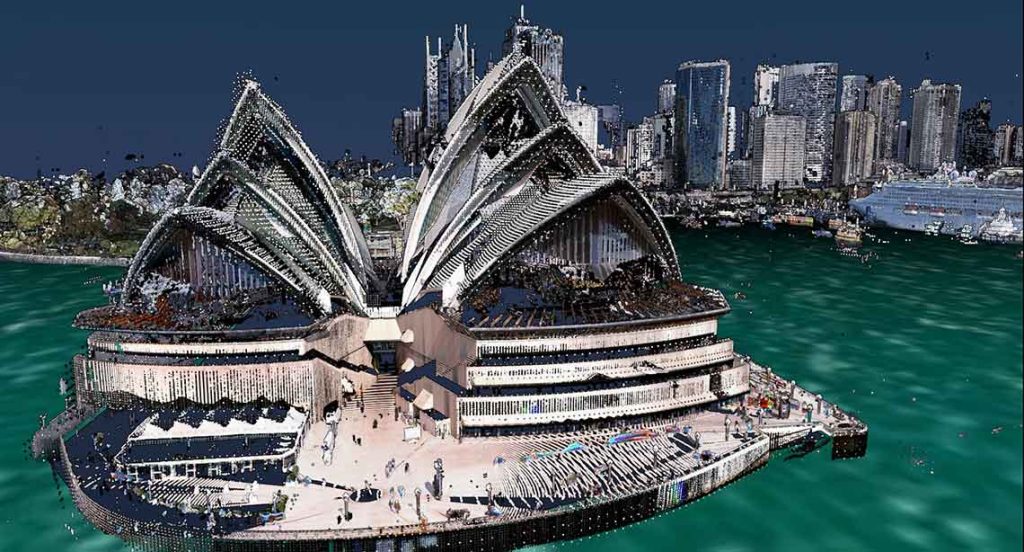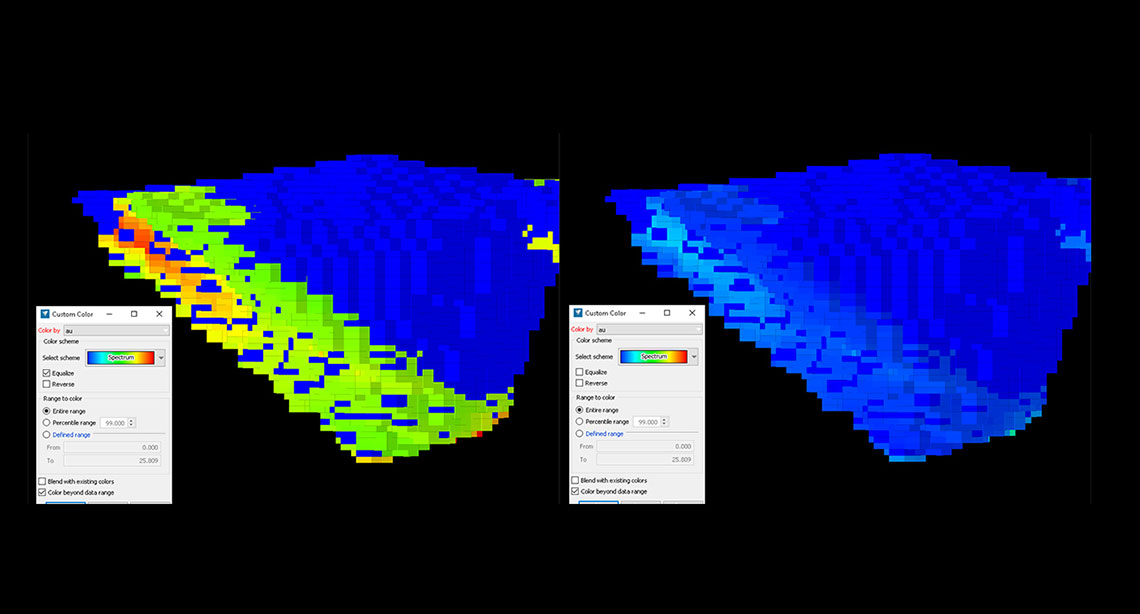September 2022 Issue Index
Creating tomorrow’s data visualisation
Maptek staff experiment with new ideas and collaborate with colleagues as they explore different approaches to solving existing problems.
Maptek introduced an initiative in 2020 that champions staff to explore different approaches and experiment with new ideas. It aligns with one of our principles, Create Tomorrow, by encouraging change and new thinking. Known as ‘10%’ time, it has brought some interesting outcomes.
Transparency leads to breakthrough
This freedom to experiment has allowed Maptek Software Engineer Sean Donnellan to lay the foundation for improved data visualisation in Vulcan GeologyCore.
The Data and SDK Team Leader was viewing atmospheric data in the Maptek 3D visualisation environment and wanted to generate a colour legend with adjustable transparency using Python scripting.
‘At first, I used the tool that assigns a colour to each block rather than creating a legend; the result was quite impactful and I could see patterns in the data,’ Donnellan said.

With the standard legend creation tool, the results were different, as almost everything looked the same colour.
‘I checked to see if it was to do with the ranges but it wasn’t. When I unchecked the Equalise option, the colouring matched the results from the first tool.’
Donnellan shared his findings with colleagues, and Head of Experimentation and Technology Simon Ratcliffe suggested ways to tweak the algorithm so it would produce fewer control points in the legend.
The initial challenge was identifying what was causing the difference in the two options and thus what feature was missing. The subsequent ongoing challenge is trying to reduce how many control points are needed in the legend.
Future development will ensure better colour legends, which can be applied to multiple objects and provide a clear visual reference guide to data values.
‘The 10% time program is a wonderful opportunity to explore tackling a problem that wouldn’t otherwise make it into our applications,’ Donnellan said.
‘It is easy to experiment with ideas that benefit Maptek development teams but the bigger challenge focuses on helping industry. It feels good to realise the potential for experimental work and see it translated into tools and features in customer hands.’
Maptek 10% time allows staff time to think, plan, create, experiment and collaborate in new ways.
Advanced maths smooths the path
Maptek Software Engineer Ryan Cuthbertson used 10% time to revisit a student project to improve the data viewing experience.
Fly-throughs of 3D data loaded in Maptek software are commonly used to showcase a project, communicate a concept or convey a design to various stakeholders in mining operations.
Existing tools in Maptek PointStudio and Vulcan GeologyCore worked well, except the camera movement was often not smooth, leading to a ‘bumpy ride’ for viewers.
‘We’ve always wanted to make this smoother and achieving it required applications of advanced mathematics,’ Cuthbertson said.


Animations of 3D data are produced from a sequence of keyframes (snapshots of frames) and the software needs to work out how to move the camera between keyframes to make the experience visually appealing.
Camera position can be considered in terms of x, y, z, roll, pitch and yaw. The simplest way to create an animation is to change the values in a regular manner between each keyframe, but this produces a robotic and unnatural motion.
More than 10 years ago, Maptek smoothed the camera path (the x, y and z) by applying Bézier curves, and now Cuthbertson wanted to tackle the roll, pitch and yaw.
This step is more challenging because objects seen at the start and end of each keyframe pair interpolation must be kept in view. Simply smoothing the orientations would result in an apparent rocking motion.
‘We wanted to simplify the viewing experience. But to make things simpler, we needed to make them more advanced under the hood.’
He explored ideas with Maptek colleagues and consulted research papers to work out the mathematical concepts involved.
‘This experimentation project was a chance to live my own values by pursuing a project oriented primarily around beauty, excellence and the human experience.’
‘Being able to employ mathematical ideas, follow my curiosity about whether the idea would work as imagined, and ultimately to see that it does, was extremely satisfying.’
- Maptek champions staff to collaborate, experiment and create new approaches to industry problems through the 10% time initiative
- Two different projects tackled improvements to 3D visualisation and animation of technical data
- Exploring the potential of experimental projects and making results available for customers is the ultimate realisation of Creating tomorrow

